Etzi's "Ice Man" and his story
Categories: History
By Pictolic https://pictolic.com/article/etzis-ice-man-and-his-story.htmlIn 1991, on the Similaun glacier, which is located in the Tyrolean Alps, two German tourists discovered a perfectly preserved body of a man who lived at least 5,300 years ago. The body is so well preserved that at first they even thought it was one of our contemporaries.

The discovery caused a real sensation both in the scientific world and in the press. Journalists in total came up with more than 500 names for the found mummy, but, in the end, on July 2, 1997, the South Tyrol government adopted the official name — the Ice Man.
The hand of the Ice Man. The mummy was found near the Etztal Valley, so the "Ice Man" is often called Etzi. This name was coined by the Viennese reporter Karl Wendl.
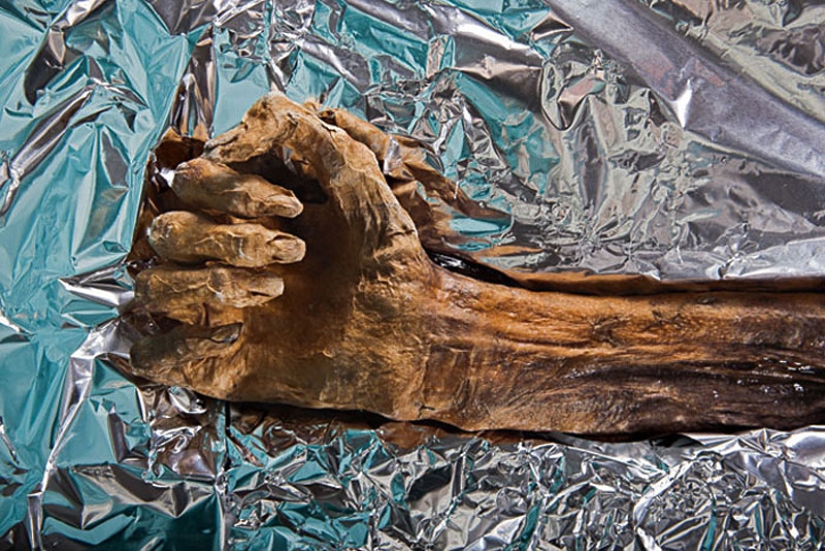
The hand of the Ice Man. The mummy was found near the Etztal Valley, so the "Ice Man" is often called Etzi. This name was coined by the Viennese reporter Karl Wendl.
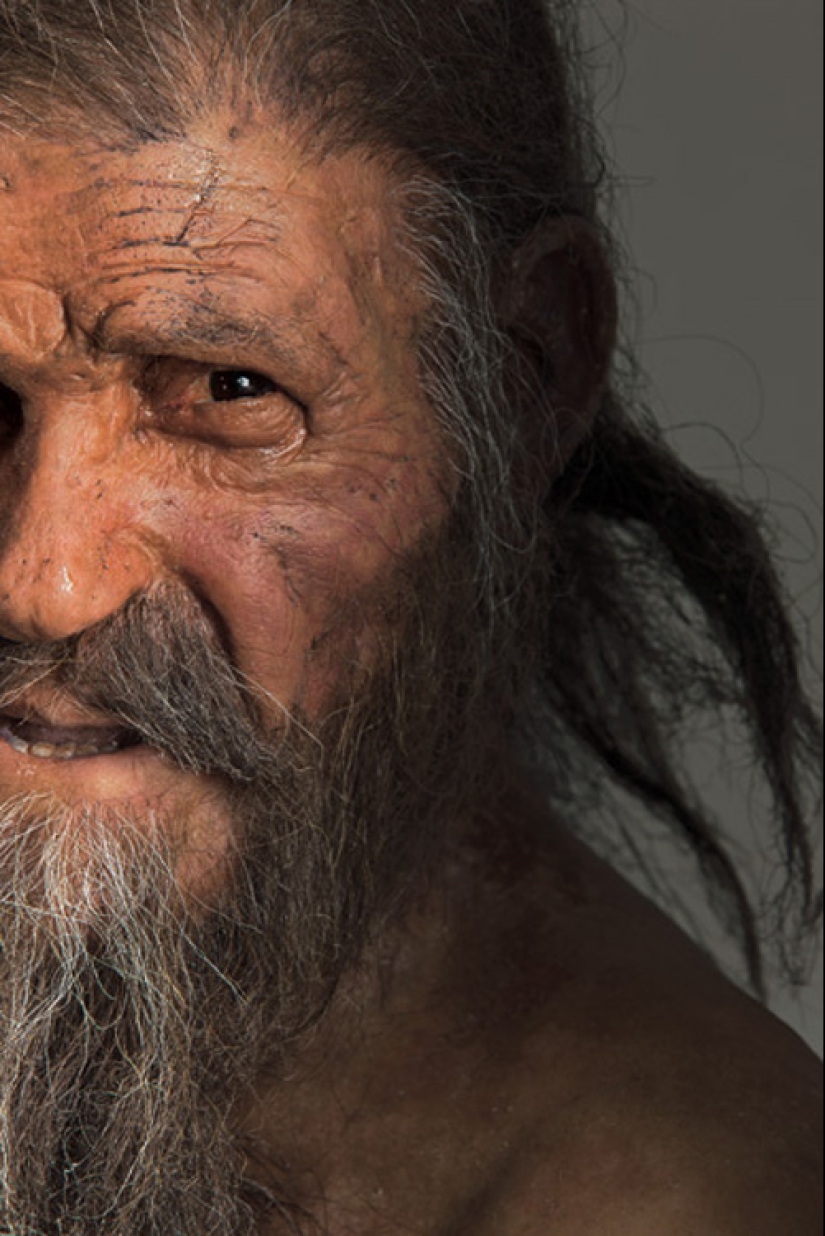
Studies have shown that Ezi's age at the time of his death was about 50 years old. If we consider that he lived during the Neolithic, then this is a very respectable age. Dutch artists Adrie and Alphonse Kennis tried to recreate the appearance of Etsi using computer technology. The brown color of Ezi's eyes is confirmed by special studies of his DNA.
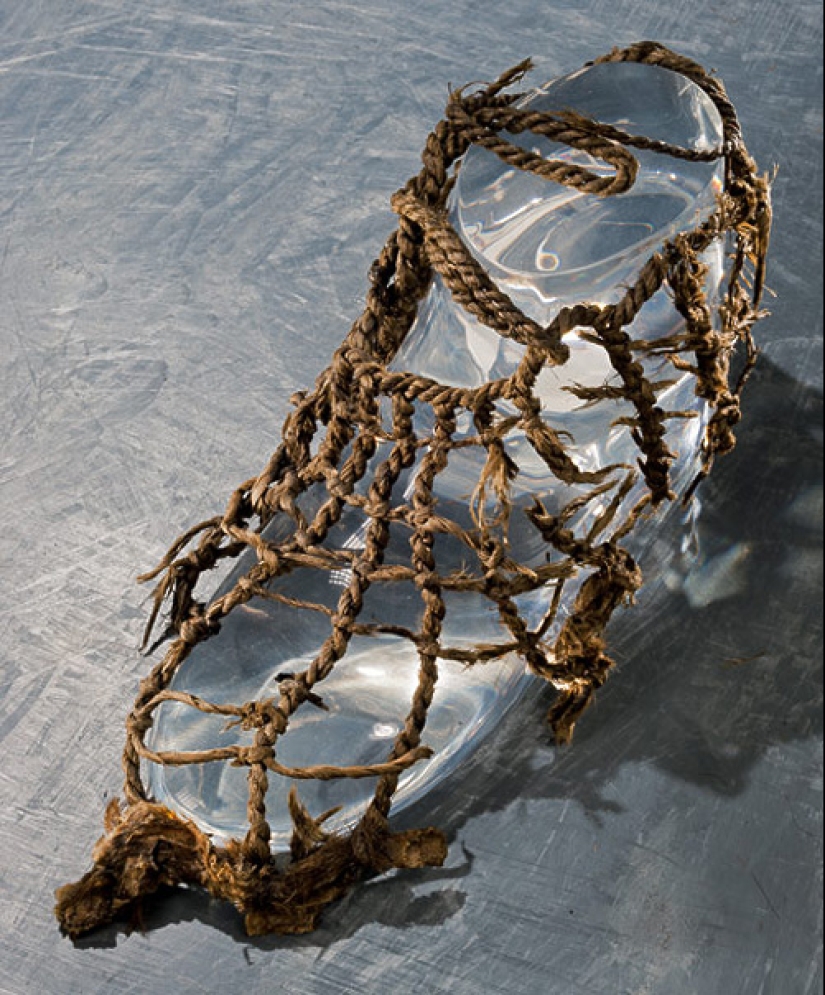
The remains of the shoes that Etzi was wearing. The shoes are worn on a foot model made of glass.
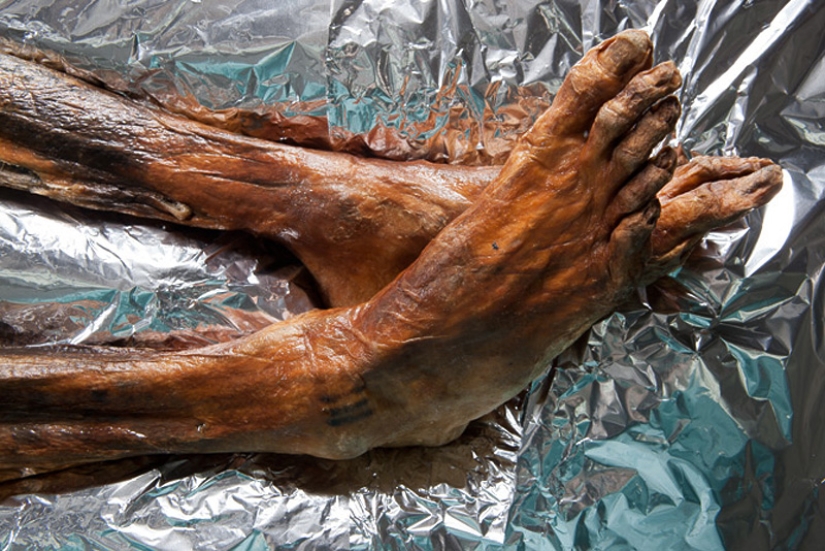
In the process of defrosting the mummy, its temperature was gradually raised to room temperature. The meltwater was all collected and sent for bacteriological analysis.
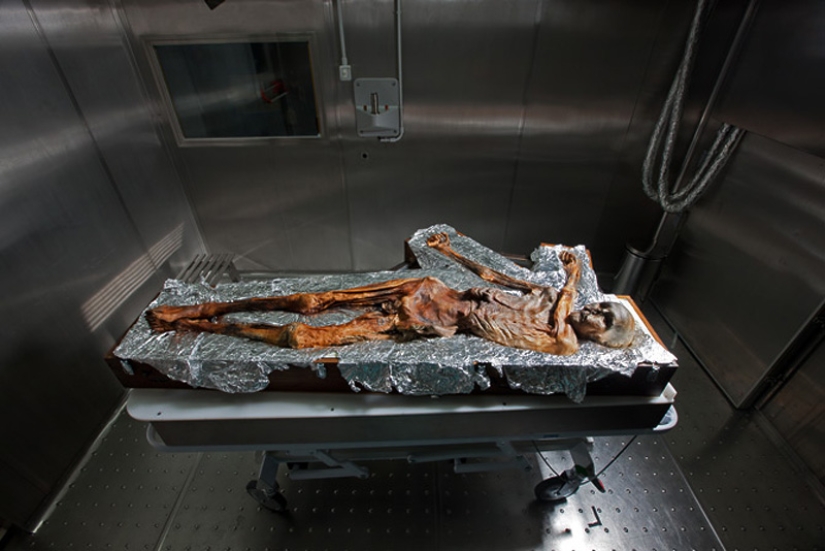
The autopsy of Etzi's body lasted almost 9 hours, then the mummy was frozen again, lowering the temperature to the original (21 degrees Fahrenheit or -6.1 degrees Celsius). The study was conducted at the Museum of Archaeology of South Tyrol in Bolzano, Italy.

The red arrow marks the place where Etzi's body was found frozen in ice. At first, no one could even guess the full importance of the find, so the body was removed with the help of ordinary ice axes and a jackhammer, while injuring Etzi's hip.
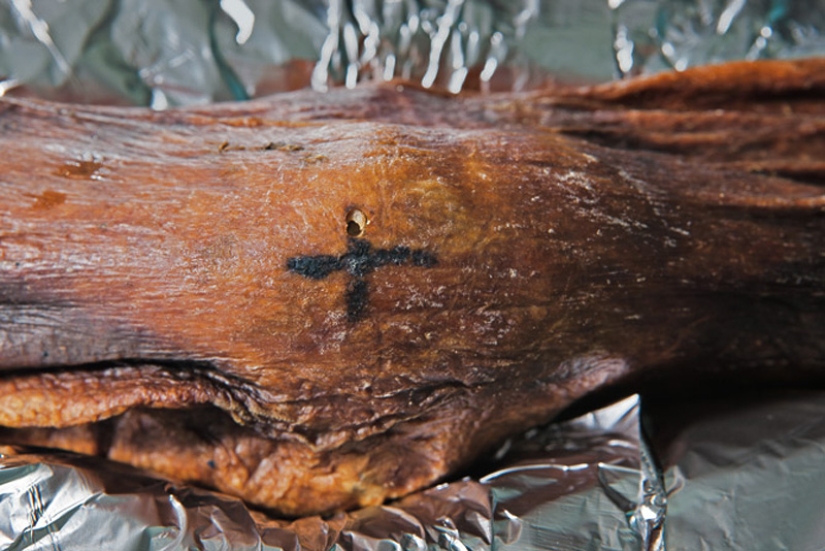
Etzi's tattoo in the knee area. In total, 57 tattoos consisting of crosses, lines and dots were counted on his body. Etzi's tattoos were applied by rubbing coal dust into incisions made on the skin. Tattoos quite accurately coincide with acupuncture points, so it is suggested that in fact Etsi tattoos are not an ornament, but traces of treatment.
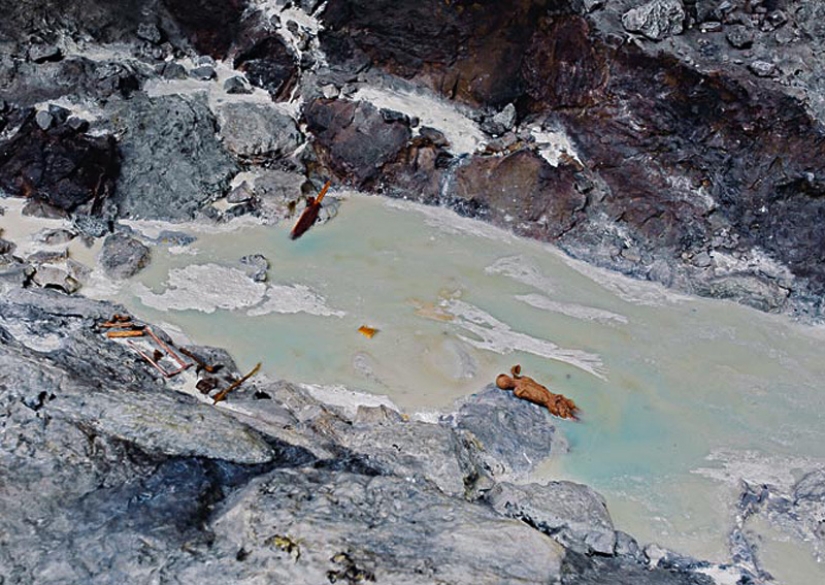
This image recreates the locations of Etzi's body and his equipment at the moment he was discovered. Of the equipment with him, Etzi had a copper axe, a stone knife with a wooden handle, a quiver with arrows, a large, almost two-meter bow, and two baskets. He also had two types of tinder boxes with him: one was used for making fire, and the other as a medicine.
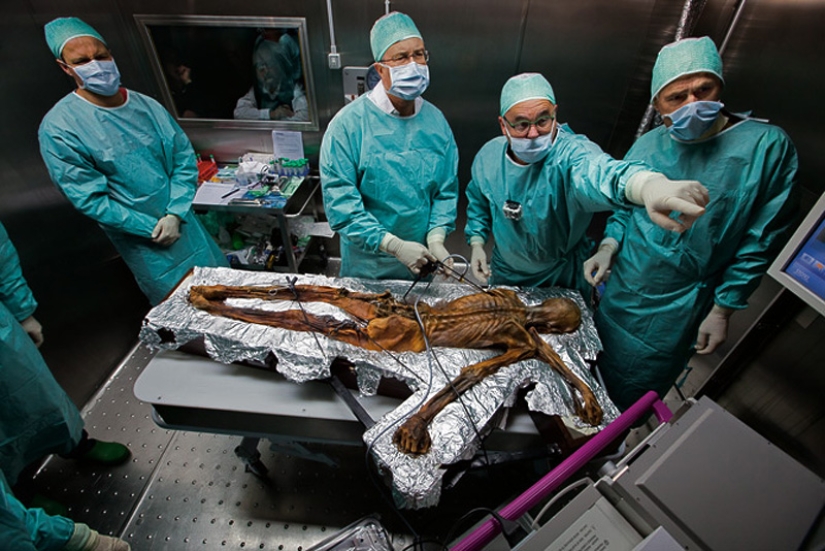
Dr. Edward Egarter Wigl and his colleagues are studying an arrowhead stuck in the shoulder of Etzi. Someone shot Etzi in the back more than five thousand years ago, the arrow pierced so deeply into the shoulder that it was not possible to get the tip of Etzi.
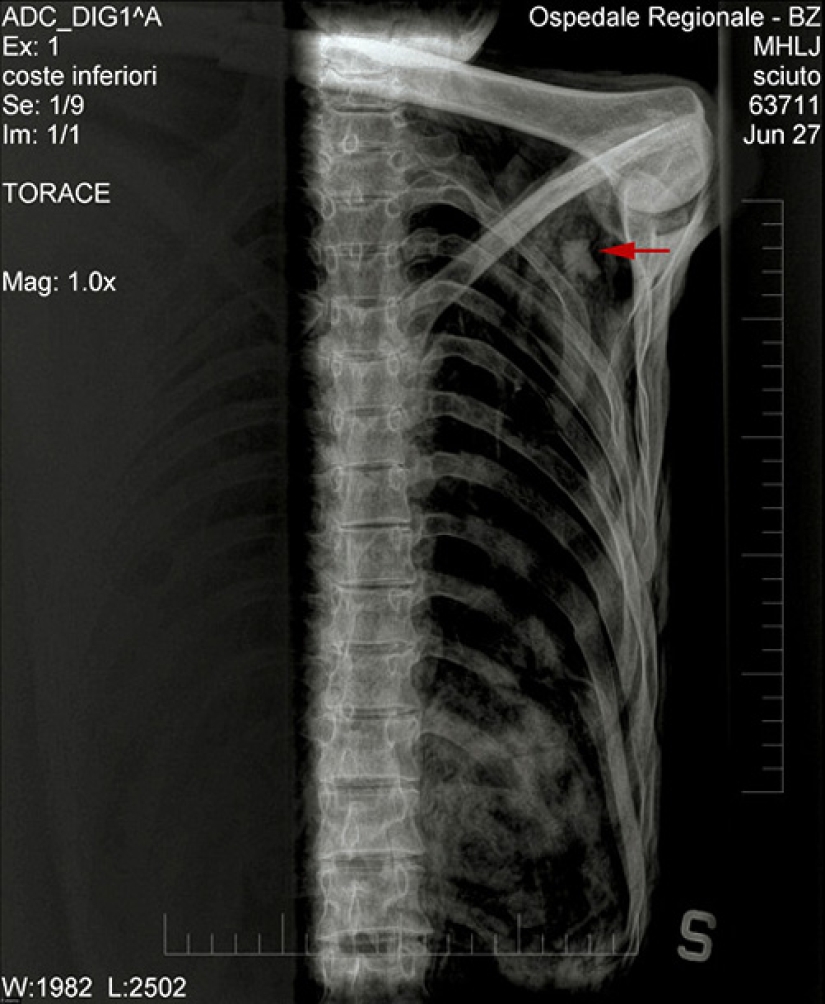
The red arrow on the X-ray image marks the location of the arrowhead.
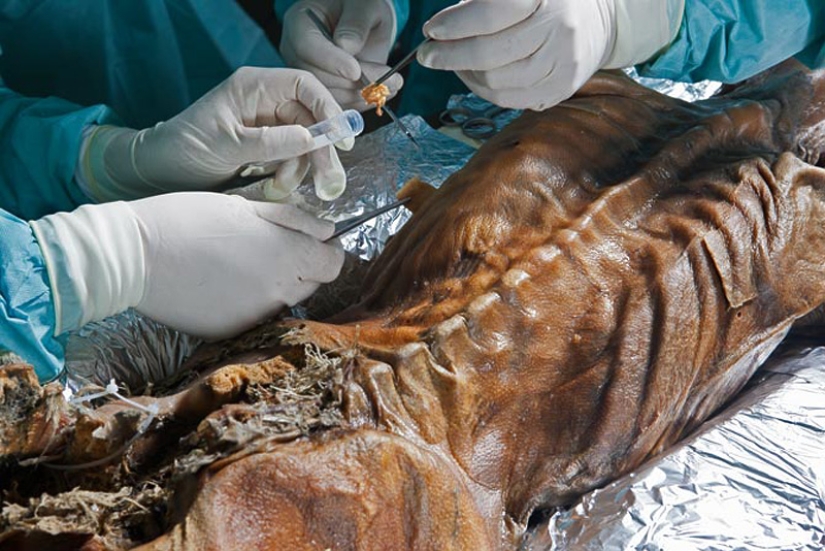
The autopsy of Etzi's body lasted 9 hours.

The contents of Ezi's stomach are collected in these test tubes. The last time Etzi ate was about 8 hours before he died. The examination showed that during his lifetime he suffered from the intestinal parasite vlasoglav, which can cause severe abdominal pain and even provoke inflammation of the appendix.
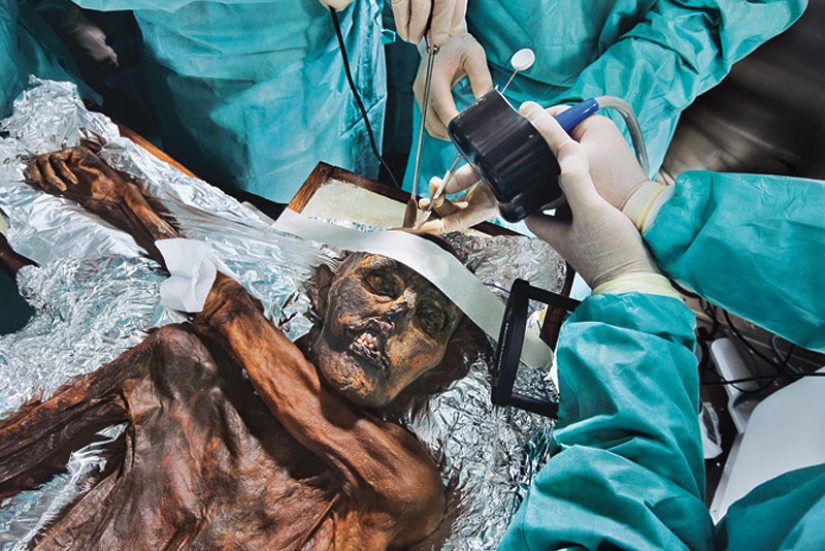
Neurosurgeons have suggested that shortly before his death, Etzi suffered a head injury.
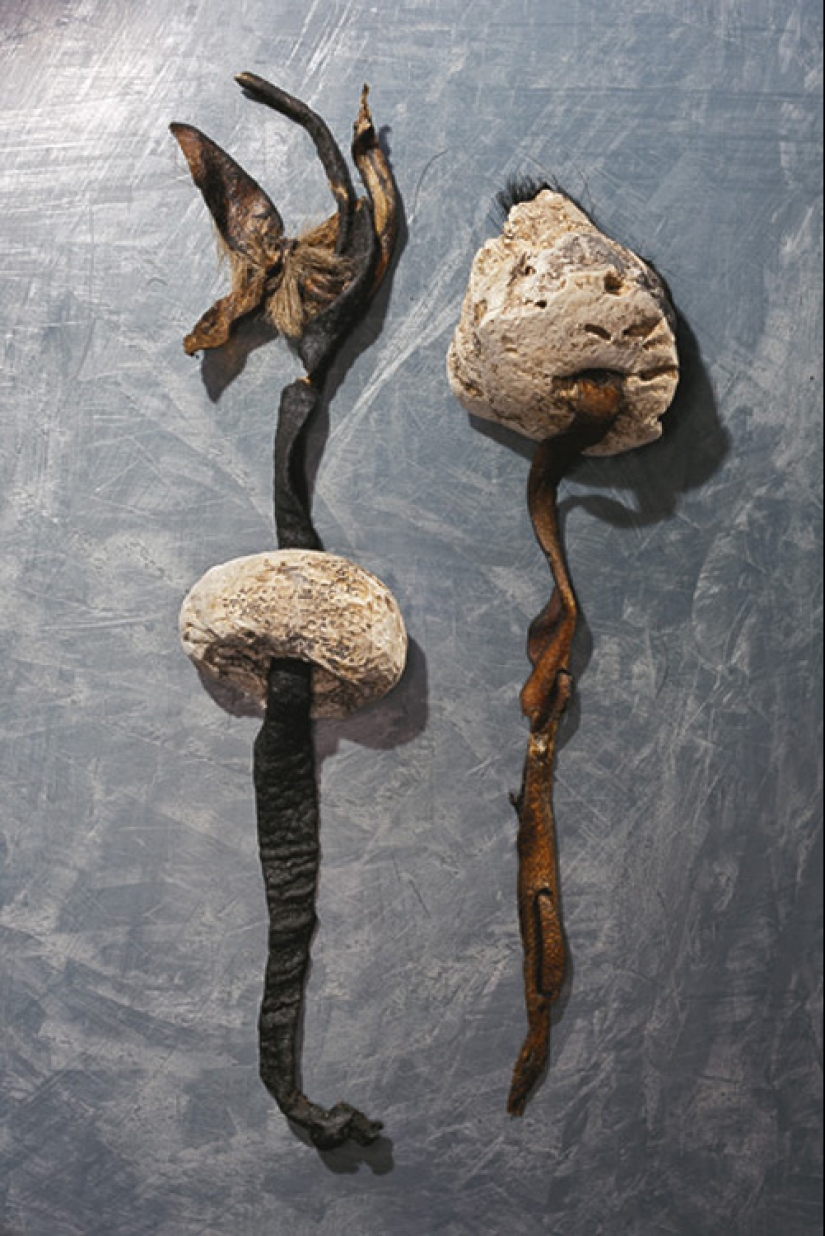
Two types of tinder boxes used by Etzi. Birch tinder, most likely, was used as a medicinal product.
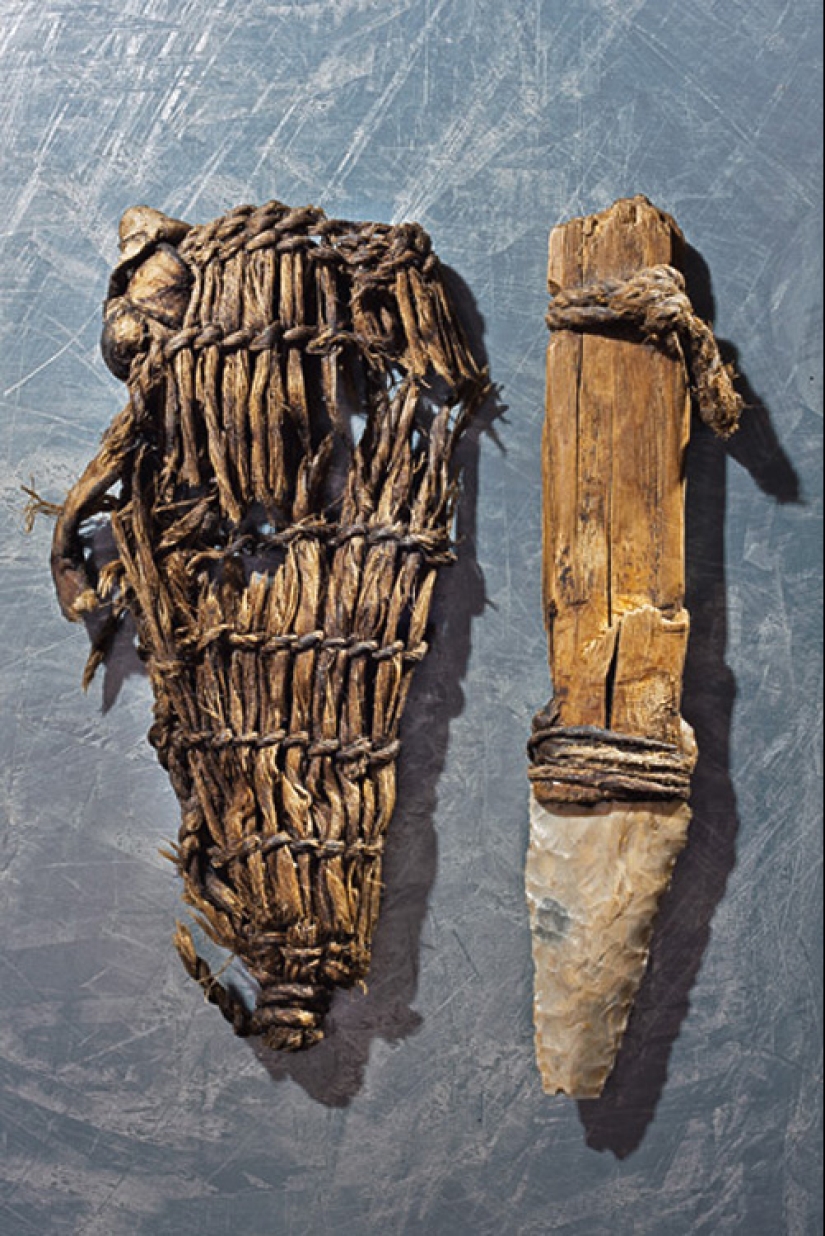
A stone knife with an ash handle and a scabbard.
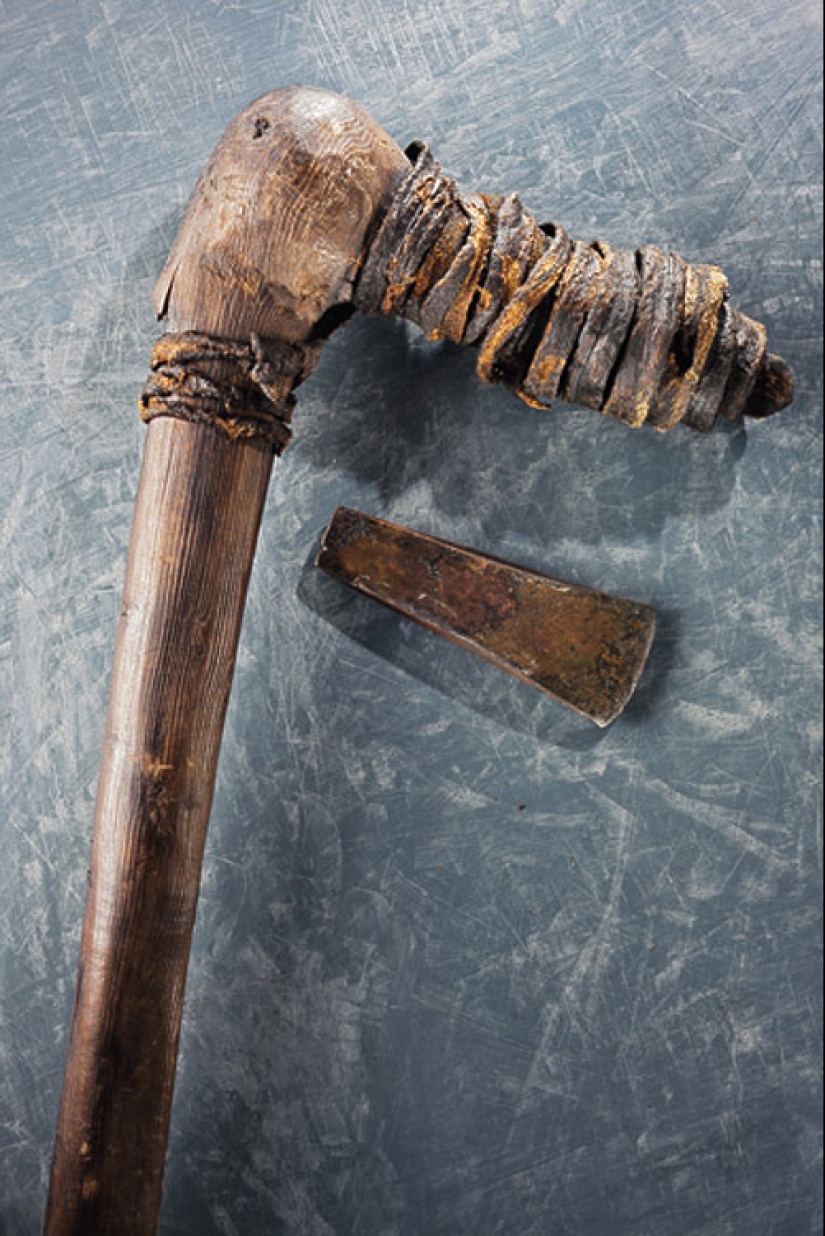
A copper axe with a yew handle. The presence of such an axe suggests that Etsi had a fairly high social status.

Arrows. Only 2 arrows ready for use and 12 more arrow blanks were found in the Ezi quiver.
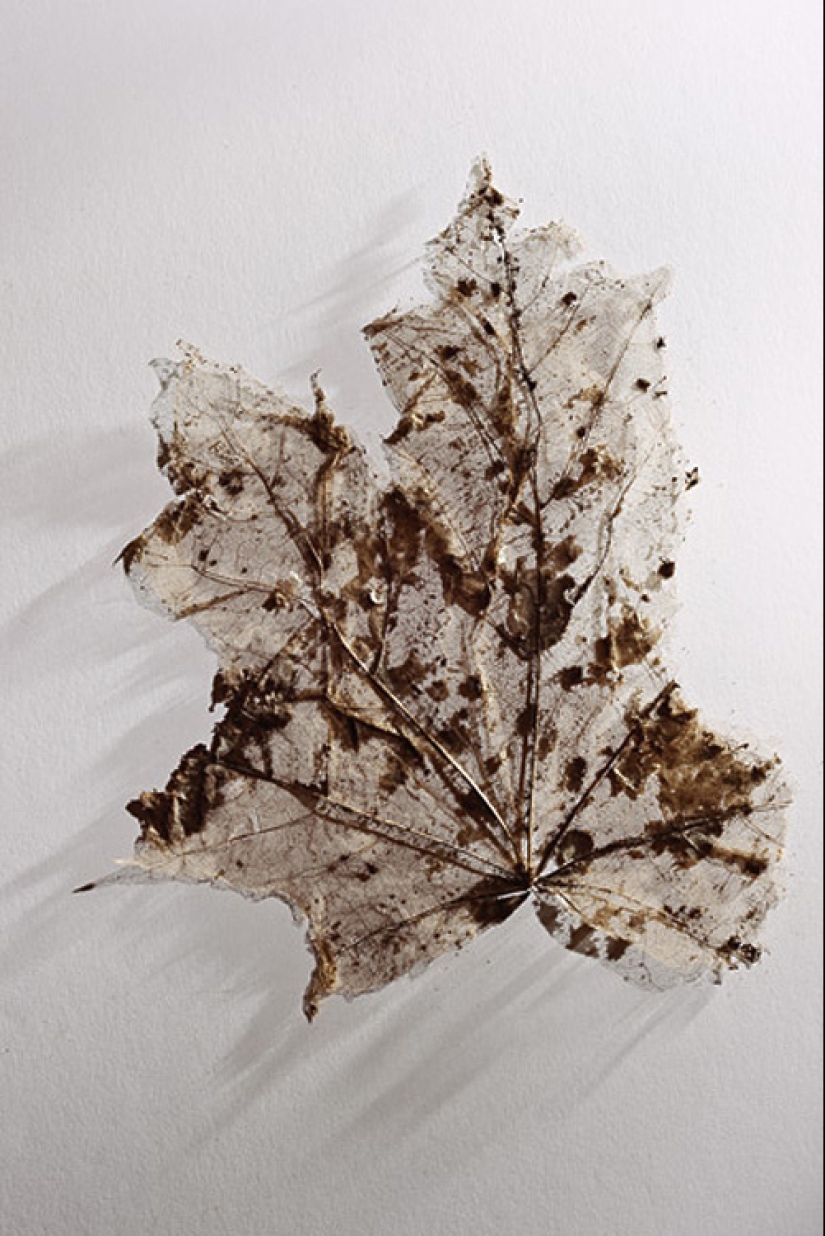
A maple leaf that Etzi had picked for some reason in late spring.

A coil of cord made of wood bark.
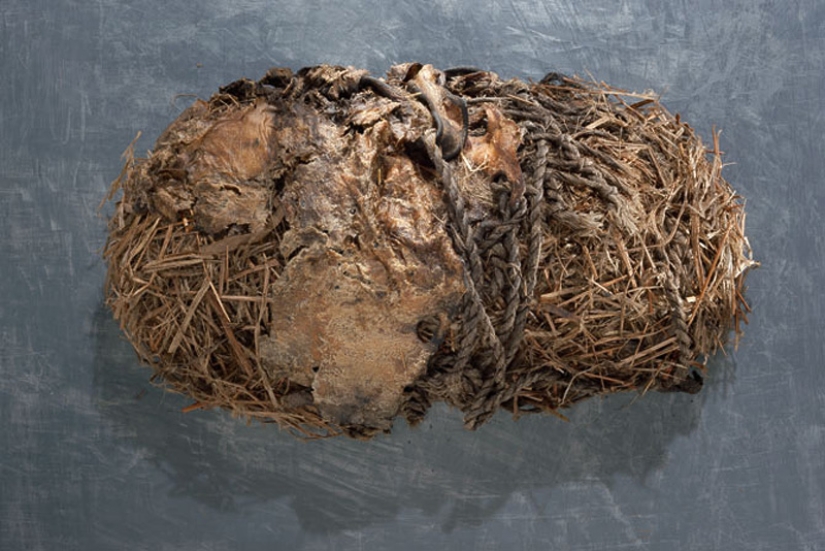
Etzi's shoes. These shoes were specially adapted for walking in the snow. The soles were made of bear skin, and the upper part of the shoes was sewn from deer skin. The mesh is made of tree bark. And instead of socks, Ezi used soft grass, which lined the shoes from the inside.
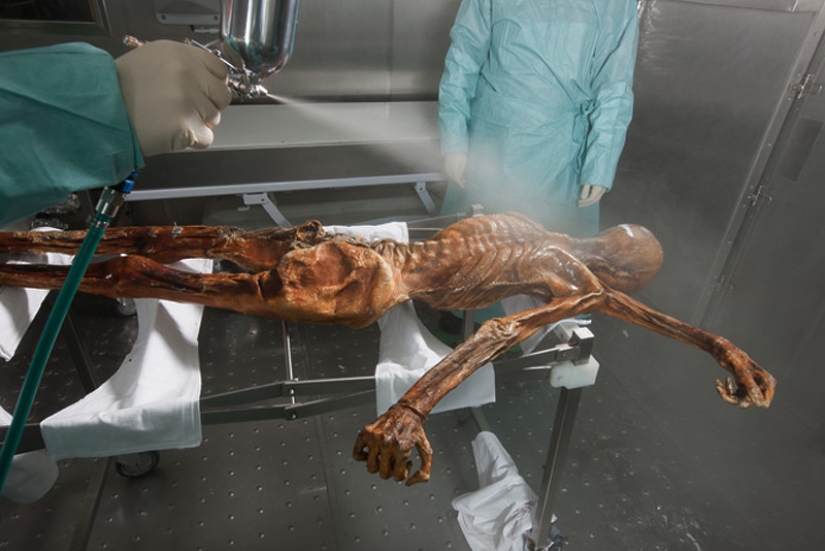
Before returning the mummy back to the glass sarcophagus made for it, Dr. Eduard Egarter Wigl treats it with a special protective solution.
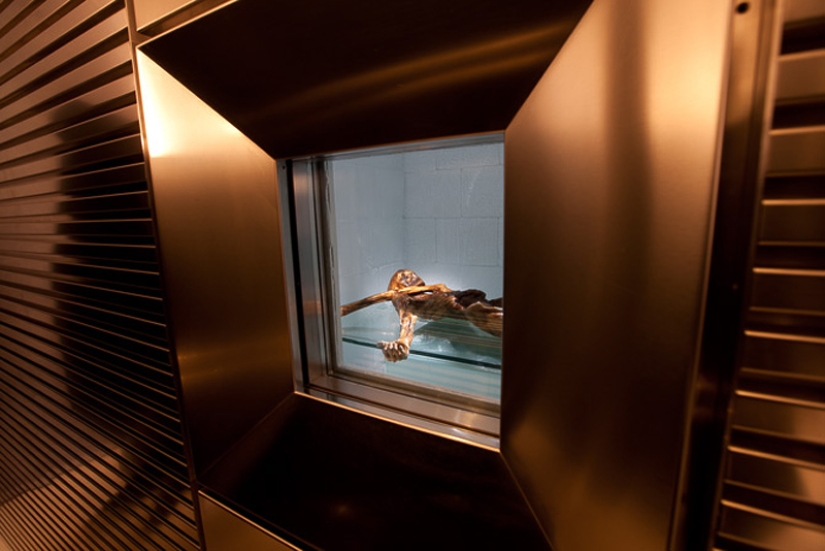
The mummy of Ezi, on display at the South Tyrolean Museum of Archaeology in Bolzano, Italy. Inside the sarcophagus, the conditions of the glacier that preserved the mummy for more than five thousand years have been recreated.

Scientists determined that the "ice man" was about 50 years old, he had brown eyes and wavy dark hair. Etzi had beautiful teeth without the slightest traces of caries, which he actively used not only for chewing food, but also for processing wood, skin and tendons.
Recent articles

Leonardo da Vinci was accused of being fond of orgies. William the Conqueror, despite all his successes, was called a "Bastard" ...

Modesty? Decency? A sense of tact? No, you haven't heard! Just look at what the people from the selection below are doing! No ...

American documentary photographer Bruce Davidson came to the UK in 1960 for a couple of months on the assignment of Queen magazine. ...